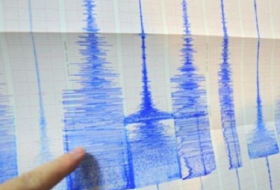Explorer vessel class reaches the parts that others cannot

Although rugged oceangoing boats have been around since the 1960s, their recent rise to prominence has been pronounced, and is perhaps typified by the emergence of Ancona-based shipyard Cantiere delle Marche. Established in 2010, the yard has already delivered 10 explorer yachts, with four currently in the process of being built.
Vasco Buonpensiere, the yard’s sales and marketing director, says it has effectively annexed a niche client pool.
“The market craved reliable, seaworthy, low-fuel yachts, with lots of volume for their length, over-engineered and lots of space for toys.”
Mr Buonpensiere places particular emphasis on the latter, with Cantiere delle Marche’s research of 50 potential clients’ cruising patterns indicating that an astonishing 89 per cent of time is spent at anchor.
“This means that they need something to spend their time on — having kayaks, subs, diving stations, wakeboards, wakesurfs, fishing gear and inflatable toys is of paramount importance. And explorers are made for this.”
Mr Buonpensiere believes the market has veered away from designs based on opulence and luxury towards more utilitarian and efficient vessels.
He says: “Yachtsmen are fed up with spending so much money and finding themselves in crowded bays with so many other yachts that are basically identical. They want to reach new destinations and they don’t want to be limited to just a few cruising grounds; and they want to have a vessel that distinguishes them from the others.”
This is a view shared by Sergio Cutolo, founder of Hydrotec, an Italian naval engineering company, and one of the industry’s most respected designers of explorer vessels. He feels that these yachts have evolved from converted tugs and trawlers into customised superyachts, specifically designed to cope with challenging water in comfort.
Mr Cutolo says this indicates that a new generation of yacht owner wants access to off-the-beaten-track locations and the open ocean.
Ben Lyons, whose company Eyos Expeditions has emerged as one of the leading providers of such rugged adventures, says demand for remote cruising itineraries is on the rise for clients.
“Getting into a popular restaurant in Monaco is not nearly as important to them as being anchored alone in a bay in Antarctica, kayaking near humpback whales,” he says.
Previously untapped regions such as the Northwest Passage, the polar regions or the Amazon basin are now increasingly accessible, thanks to companies such as Eyos and the support of local agents.
Eyos has been advising on the latest superyacht project from Dutch shipbuilding behemoth Damen Shipyards, the SeaXplorer range, which will be officially unveiled at the Monaco Yacht Show.
However, as with any trend, there are pretenders. Some owners are commissioning yachts with explorer looks but very different capabilities. It is Mr Cutolo’s analogy that perhaps sums up this element of the market best: “It is connected to aesthetic preferences rather than content. A client might prefer an ‘explorer look’ the same way some people buy sports utility vehicles even if [they have no intention] of crossing a desert or driving in the snow.”
Despite this, the real explorer class is far from overcrowded.
The market “will undoubtedly continue to grow”, Mr Lyons says. “More owners see what is possible and want their yachts to be similarly capable. In addition, a new demographic of younger, more active owners is becoming attracted to yachting.”
These seafarers want to exploit the potential of their vessels and see rugged places that are accessible only by sea.
“The more capable the yachts become,” says Mr Lyons, “the more exciting the places they can reach, and the more that will generate additional demand.”





















-1745485667.jpg&h=190&w=280&zc=1&q=100)

























